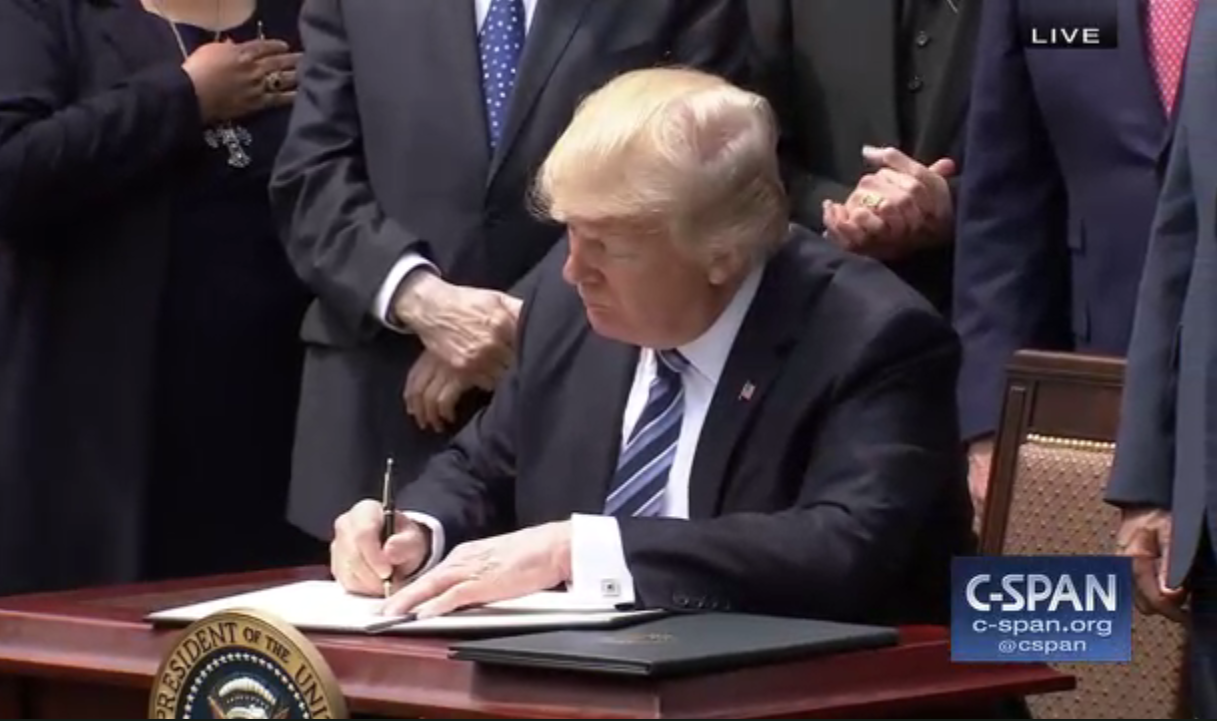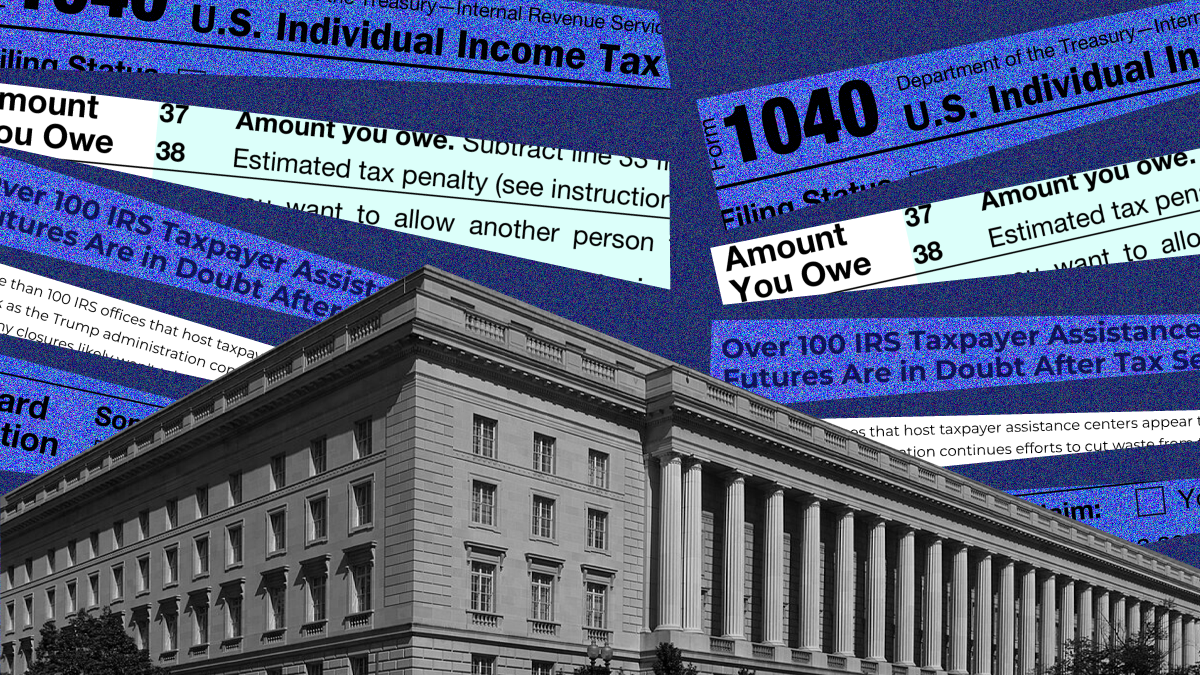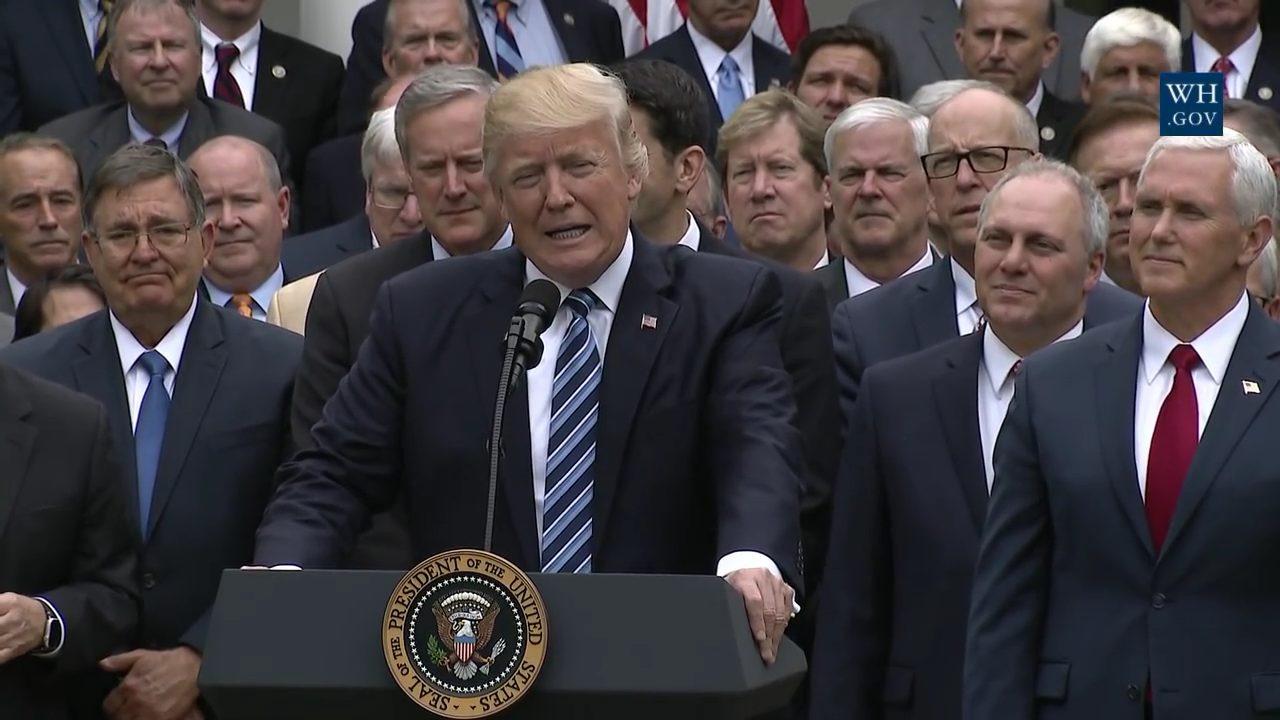Abortion rights, women of color, and LGBTQIA+ people are under attack. Pledge to join us in fighting for gender justice.
Tax “Reform” Really Means Tax Cuts for the Super-Rich

Yesterday, the so-called “Big Six” (consisting of four Republican Congressional leaders and two members of President Donald Trump’s Administration) rolled out their most detailed plan yet to give more tax cuts to the super-rich and corporations. The House Ways and Means called it, “an exciting day for…millions of Americans.” What they should have said is that it was an exciting day for millionaires, billionaires, and big corporations, not for working families.
Republicans claim the policies laid out in the tax framework will help middle-class families, pointing to the proposal to double the standard deduction and increase the Child Tax Credit (but not saying by how much or making those increased benefits refundable) and make it available to higher-income families. However, the net impact to working families from these suggested changes depends on the whole package of proposed changes to the tax code – and the framework leaves many of those details to Congress to figure out. And other proposals in the framework, such as eliminating personal exemptions for dependents and eliminating numerous tax deductions, could very well mean that the overall tax package would be, at best, a wash for middle- and lower-income working families.
While it is unclear whether the framework released today would actually help working families as the Big Six claims, what is clear is that the proposal would give massive handouts for millionaires, billionaires, and big corporations. Early estimates indicate that “the top 1 percent of households (those with incomes above $700,000) would get roughly 50 percent of the framework’s net tax cuts.”
So let’s take a look at four of the ways that the tax framework would give big tax handouts for the richest Americans:
1. Cuts taxes for those making more than $400,000 a year.
In direct contrast to Trump’s statement earlier this month that “the rich will not be gaining at all with this plan,” the framework proposes cutting the individual income tax rate from 39.6 percent to 35 percent. Although the framework leaves it open for the Congressional tax committees to raise the top rates, what will end up happening in this process is speculative at best. What we do know from the framework now is that individuals reporting incomes of over $418,400 a year would get a tax cut.
Cutting taxes for the wealthiest Americans is directly contrary to what the majority of Americans thinks—that taxes on the wealthy should be increased and not decreased. And despite what some argue, tax cuts for the rich do not lead to vast economic growth. Instead, they cost trillions and research shows that tax cuts for the rich are linked not with economic growth but simply with increasing income inequality.
2. Slashes the top corporate tax rate from 35 percent to 20 percent.
At a time when there are record highs for corporate profits and record lows for corporate taxes, a massive tax cut for profitable corporations is the last thing the country needs. Although Trump bemoans the 35 percent statutory maximum corporate tax rate as being too high, the reality is that the average effective rate that corporations actually pay is much lower—24 percent. Indeed, many corporations pay little to nothing in taxes.
While the Trump Administration and many Congressional Republicans claim this cut is necessary to promote “economic growth” and will pay for itself, research shows that cutting taxes for corporations is unlikely to lead to significant job growth.
Lowering the top corporate tax rate is not just unnecessary, but it is also costly—potentially resulting in trillions of dollars in lost revenue over the next decade.

It’s time for big corporations to pay their fair share, not further cuts to corporate taxes.
3. Creates a loophole for hedge fund managers, lawyers, and real estate developers (aka, the “Trump loophole”).
Under the guise of cutting taxes for small businesses, the Big 6 proposes slashing the pass-through tax rate for sole proprietorships, partnerships, and S corporations from 39.6 percent to 25 percent. Overall, 86 percent of people with pass-through income pay 25 percent or less and would see no benefit from this cut. Instead, the vast majority of the benefits from this cut would flow to millionaires—the wealthy hedge fund partners, consultants, real estate investment firms, and even Trump himself.
This pass-through tax cut would likely cost $390-660 billion. Although the framework assumes that the tax-writing committees will figure out how “to prevent the recharacterization of personal income into business income to prevent wealthy individuals from avoiding the top personal tax rate”, the more likely outcome is that this tax cut would balloon into a gigantic new loophole. Congress must close tax breaks and loopholes benefiting the super-rich and corporations, not create more.
4. Eliminates the estate tax.
Only the wealthiest estates pay this tax (2 out of every 1,000 estates), and repealing it would cost at least $269 billion over the next ten years.
These tax cuts are estimated to be worth roughly $150,000 a year on average to the top 1% of households. And they would cost trillions, threatening massive cuts to programs that help low-income women and their families, such as Social Security, Medicaid, and the Supplemental Nutrition Assistance Program. The last thing women and families with critical programs and investments in education, job training, health care, and disaster relief already under attack need is to pay for another tax cut for millionaires, billionaires, and big corporations.
If you think the giveaways to the rich are bad news, wait, there’s more. The framework also failed to take the opportunity to focus on lower-income working families. As mentioned above, its proposal to improve the CTC does not make the increases in the credit amount (whatever they end up being) refundable BUT increases the income levels for phasing out the CTC—a change that would help higher-income families, not low- and moderate-income families. Any CTC improvements should target benefits towards the lowest-income families with the greatest need and the framework’s current CTC proposal falls short of doing so. Oh and did we mention that the framework proposes raising the tax rate for the lowest income bracket from 10 percent to 12 percent?!

Yes, that’s right. Republicans want to raise tax rates for the lowest-income families.
 The tax framework is also lacking in details about other proposed changes that would severely impact women and families. For example, will Congressional tax writers eliminate the head of household filing status, as Trump proposed while campaigning? The head of household status reduces the tax burden for millions of unmarried adults supporting dependents (mostly single parents). Because women headed 75 percent of single-parent families in 2015, eliminating this filing status would increase taxes for millions of single mothers and their families.
The tax framework is also lacking in details about other proposed changes that would severely impact women and families. For example, will Congressional tax writers eliminate the head of household filing status, as Trump proposed while campaigning? The head of household status reduces the tax burden for millions of unmarried adults supporting dependents (mostly single parents). Because women headed 75 percent of single-parent families in 2015, eliminating this filing status would increase taxes for millions of single mothers and their families.
Rather than offer even more tax cuts for the super-rich and corporations, any tax proposals should be focused on closing tax loopholes to ensure the wealthy pay their fair share. This plan should be dead on arrival.




